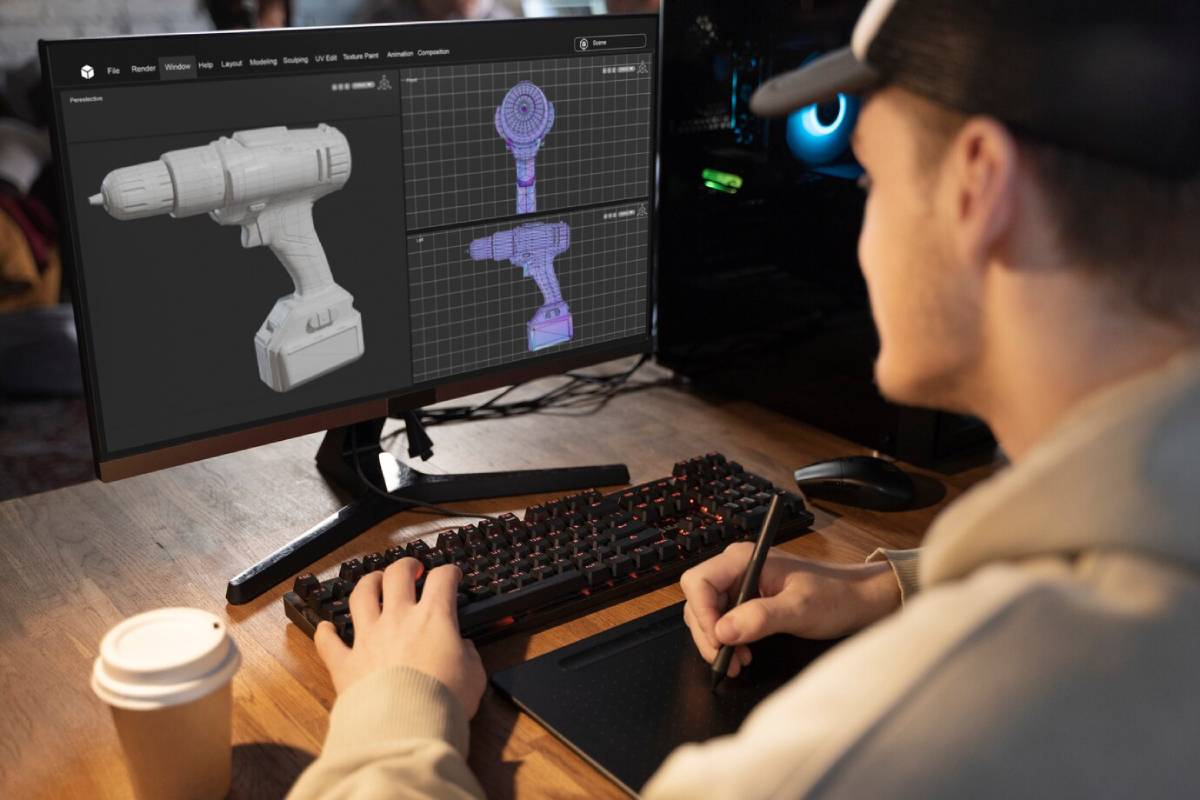
AI Tools for Generating Product Images: Revolutionising Visual Content Creation
In today’s digital world, visual content is key. Businesses always look for fresh ways to draw in and engage customers. Product images are key in shaping how customers see a brand. They help people judge quality and influence buying choices. Creating high-quality product visuals has always been hard work. It takes a lot of time and money.
Enter artificial intelligence.
AI tools for creating product images are changing how businesses see visual content. These tools help e-commerce brands, marketers, and designers. They cut production time and allow for mass customisation, so they provide scalable, flexible, and innovative solutions. In this blog, we explore AI image generation, look at its key benefits and best practices, and discuss how these technologies are changing digital commerce.
Key Benefits of AI Image Generation for Product Visuals
Applying AI in image generation is not just a convenience—it’s a strategic asset. Below are some of the most impactful advantages.
1. Enhanced Efficiency and Cost-Effectiveness
Producing product images used to take a lot of work. You had to hire photographers, rent studio space, and set up lighting. You also needed props. You edited the images and sometimes did multiple shoots for small changes. This process not only consumed valuable time but also demanded considerable financial investment.
AI-powered image generation flips this model on its head. Businesses can quickly create eye-catching product images. Tools like GANs and diffusion models help achieve this in minutes. AI platforms like Midjourney, DALL·E, and Runway ML make this quick and easy.
By reducing the dependency on physical photoshoots, businesses benefit from:
- Lower production costs
- Faster turnaround times
- More efficient workflows
Startups and small e-commerce brands can now compete visually with bigger players without a huge creative budget.
2. Consistency Across Visuals
Visual consistency is one of the hallmarks of a professional brand. It boosts brand identity, builds customer trust, and creates a smooth shopping experience.
AI image generators can be trained or prompted to follow specific brand rules, such as:
- Colour palettes and tone
- Lighting styles (e.g., natural light, studio light)
- Camera angles and product positioning
- Background types and styling
Businesses can quickly create many product images. These images will have a consistent look, whether for websites, social media, or ads.
Maintaining this consistency at scale used to be a challenge, but with AI, it becomes seamless.
3. Customisation and Personalisation
Another game-changing advantage is the ability to create customised product visuals on demand.
Picture the exact product displayed in various settings. Change the scene based on geography, culture, or season.
- A jacket photographed against a snowy alpine backdrop for winter promotions
- The same jacket in a cityscape for a metropolitan campaign
- Or paired with matching accessories for cross-selling
AI tools help marketers easily change backgrounds, lighting, and context. They can do this without reshooting the product. This capability opens up powerful opportunities for:
- A/B testing visual styles
- Targeted campaigns for different demographics
- Dynamic content generation based on user behaviour
The result? More engaging and relevant visuals that connect better with your audience.
4. Scalability for Growing Businesses
As businesses grow, they need more visuals. This need grows greatly, especially when they add new products or enter new markets.
Manual content production struggles to keep up with that kind of demand. AI offers a scalable solution that grows with the business. It enables:
- Quick updates to visuals when product features or packaging changes
- Bulk generation of images for product variants (e.g., colour, size, style)
- On-the-fly creation of assets for flash sales, holidays, and seasonal promotions
This flexibility keeps visual content creation from slowing down your business growth.
Expert Tips & Common Pitfalls to Avoid
AI tools are powerful. But to succeed, you need to think strategically and be careful. Here are some tried-and-true tips and common mistakes to watch for.
Best Practices for AI Image Generation

Use High-Quality Inputs
Even the most advanced AI tools depend on the quality of their inputs. Low-resolution or poorly composed reference images can produce underwhelming or distorted outputs. Use clean, bright source images or clear prompts for the best results.
Regularly Update and Fine-Tune Your Tools
AI models improve continuously. Many platforms often release updates. These updates include better training data, improved algorithms, and new features. Update your tools to use the latest features. This helps you create top-notch content.
Additionally, consider fine-tuning AI models to your brand’s style. Many enterprise platforms let you “train” the system on your brand’s style. This helps it create visuals that match your identity.
Test, Iterate, and Optimise
A significant benefit of AI-generated content is its speed. You can test different approaches quickly. Don’t hesitate to:
- Try multiple variations
- Run A/B tests on visual layouts
- Collect data on which images convert best
Use that feedback to refine your creative strategy over time.
Common Mistakes to Avoid
Over-Reliance on Automation
AI should be seen as an enhancement, not a replacement, for human creativity. Over-relying on auto-generated content can lead to generic visuals that lack personality. The best results come from mixing human vision with AI speed. This means refining AI outputs with human art direction or touch-ups.
Neglecting Brand Guidelines
Without oversight, images may look good alone but feel disjointed together. Make sure your AI images follow brand identity standards. This includes tone, typography (if needed), framing, and colour grading.
Future-Forward Insights: What’s Next in AI Image Generation?
AI is evolving fast, and its use in creating visual content is growing quickly. Here are some forward-looking ideas that businesses should begin exploring now.
AI + Augmented Reality (AR)

A promising area is blending AI-generated images with AR experiences. Imagine customers being able to:
- Visualise how a product fits in their home (for furniture or décor)
- Try on accessories or apparel virtually
- Explore 3D product representations generated from 2D AI visuals
This immersive approach boosts engagement and helps cut down returns. It does this by providing better pre-purchase visualisation.
AI-Driven Market and Visual Trend Analysis
AI can do more than just create content. It can also analyse how consumers react to visuals. This includes tracking engagement, click-through rates, and conversions. By pairing image generation with analytics, businesses can:
- Identify which aesthetics drive more engagement
- Adapt their visual strategy in real-time
- Develop trend-responsive content before competitors
AI is becoming not just a creative partner, but a strategic one.
Ethical Use and Transparency
As AI-generated content becomes more common, businesses must consider ethical implications:
- Should customers be informed when visuals are AI-generated?
- How do you ensure authenticity without deception?
- What are the copyright and ownership implications?
Transparency and responsible AI usage are critical. Brands that are clear about their processes can gain more trust from consumers.
Conclusion: The Future of Visual Content is Here
AI is changing product image creation right now. It’s not just a future idea; it’s reshaping how businesses work online. AI is key for modern e-commerce. It helps create stunning product photos quickly. Also, it supports custom campaigns that connect with various customer personas.
Businesses that adopt AI today will gain a competitive edge. They will prepare for lasting success as consumer expectations and digital experiences change.
If you’re a startup wanting to build your brand or a retailer looking to innovate, now is the time. Explore AI-powered image generation for new creative possibilities.
Take the Next Step
Are you ready to embrace the power of AI in your visual content strategy?
- Explore AI platforms like DALL·E, Runway, or Midjourney
- Experiment with prompt-based image generation
- Combine AI output with creative direction to tell compelling product stories.
We’d love to hear how you’re using AI to revolutionise your product visuals. Share your thoughts, tools, and results in the comments below.